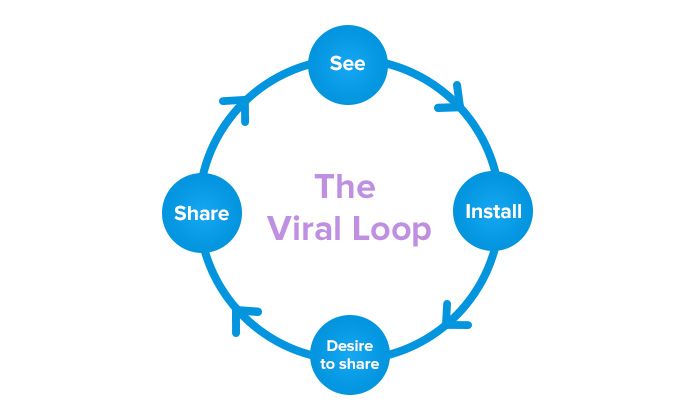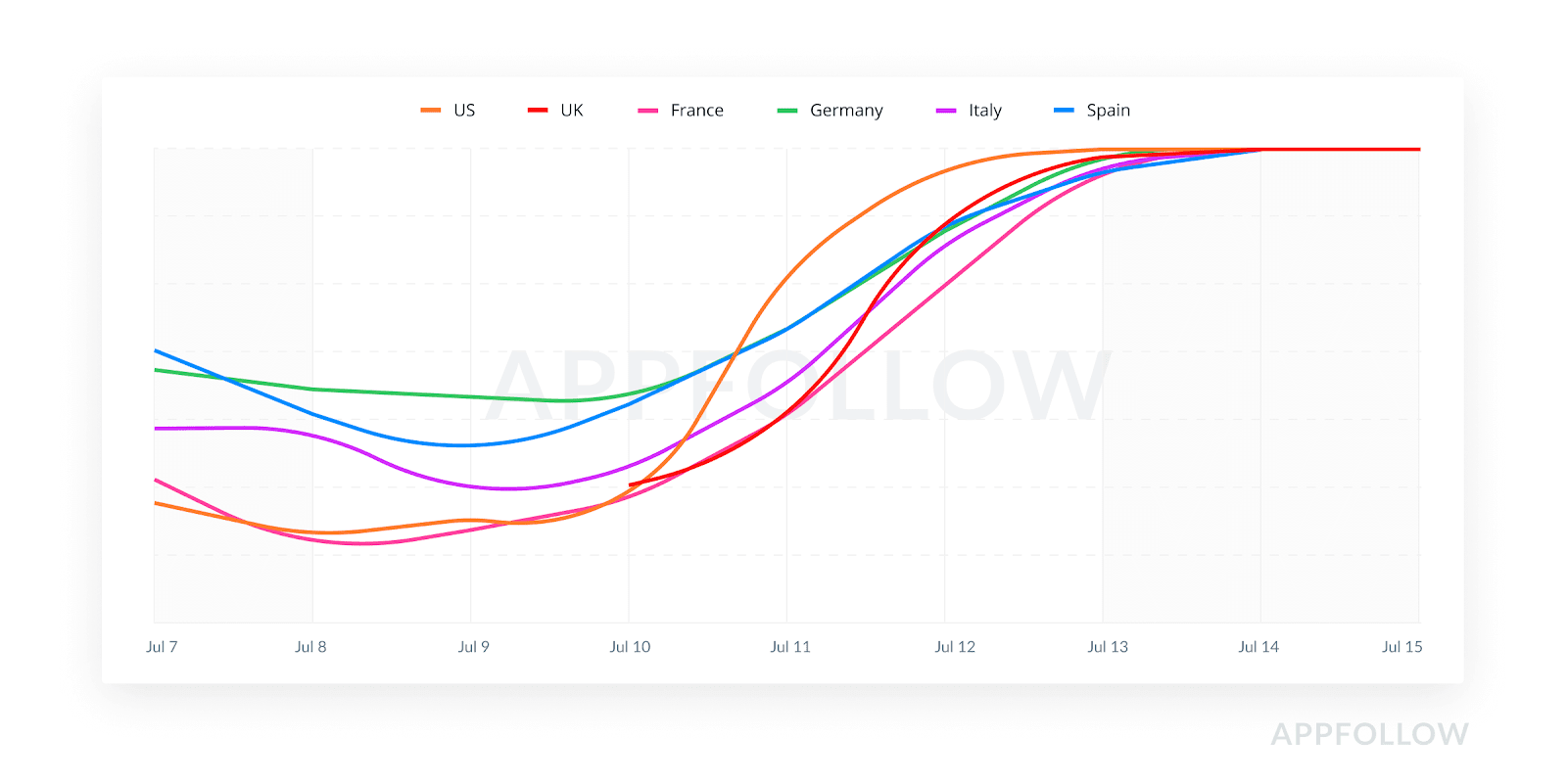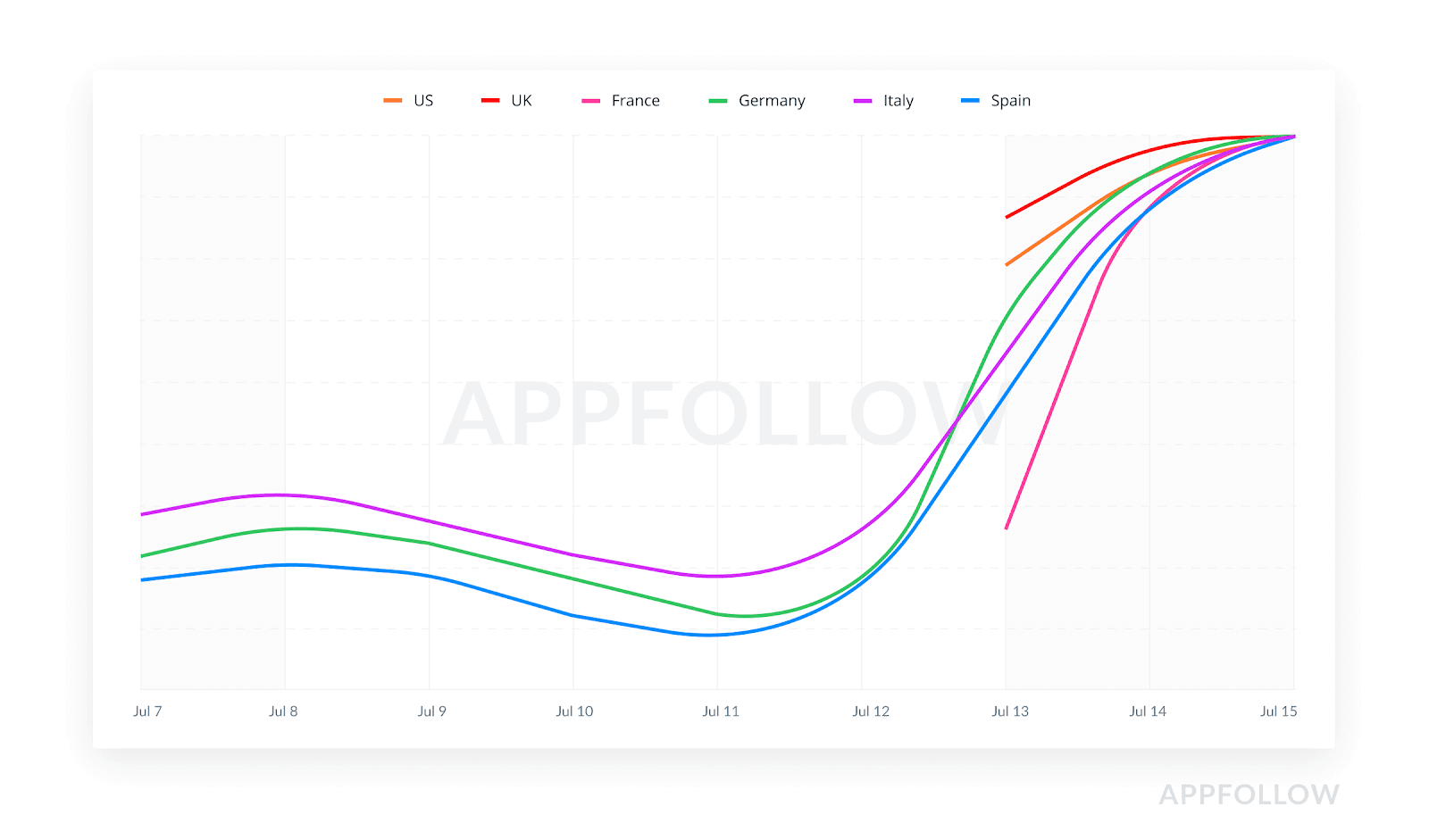Note: This is a guest article from AppFollow.
So, you have a great app with even more great features that perfectly suit the needs of your potential users. The question is how to get them. And how to get them, especially if your budget is tight.
Also, here comes another question - how to win this competition game? There are more than 5 million applications across all the stores, and it’s difficult to find the easiest way to download them.
In this article, we will share some tips and insights on how to improve your organic user acquisition and get the most out of channels that can bring you growth at minimum cost.
App Store Optimization
The app industry is rapidly growing and becoming competitive, it is obvious that using only paid acquisition is not enough anymore - the costs are getting higher and affecting Customer Acquisition Cost. So here is a powerful tactic to boost your app organic traffic - pay special attention to App Store Optimization (ASO).
Just like traditional SEO enables websites to appear on the first pages of search results, high ASO ranking can boost an app to top results in stores. Some research data shows that over 60% of all apps are found by users simply by searching in the stores.
The main areas of ASO work include but are not limited to:
- Title optimization – the addition of precise keywords in the name is the core to developing the visibility of your app in search results.
- Keywords research – finding and using the hottest keywords for your specific target audience can help to drive even more traffic to your
Further optimizing the app page itself to improve conversion, for instance, by creating right app icon or adding a preview video, eye catching screenshots and an engaging description, helps to boost the number of downloads, which in turn boosts the number of reviews and overall visibility of the application.
It is super important to remember that Google Play Store and Apple App Store have developed their own algorithms, so some indexing factors become unique for each store.
Tip for the App Store: app localization helps you to work on the conversion in different countries and languages due to translation of the titles, description and keywords. Also, each extra localization adds 100 characters for keywords and more characters in the title and subtitle. If you add, for example, Mexican Spanish language as an extra localization for US English apps, this will give you 130 more characters and keywords to promote your app.
ASO doesn’t end with using right keywords in app metadata, it also includes thoughtful work on app icon, screenshots (or preview video), quality of description - these factors directly influence download conversion rate by helping your potential user to understand the value and main features of your product.

You can easily optimize your app keywords for different locales and check what your competitors strategy is by using AppFollow ASO Tool. By optimizing keywords wisely your app will rank in app stores search and get more organic traffic.
Get featured in app stores
Another great way to get organic traffic is to get featured in app stores. There is a fair reason for Google and Apple to do it—they want to help users discover great apps. Featured categories are unique stories and collections that have been chosen by the Apple or Google editors: new games, apps, custom collections and developers’ stories. They tell us how an app or a game can improve our reality, attract new users, and help us find out more about new releases. These collections often feature apps related to the theme of the day, such as holidays, different local events or even on what you are up now.

Unfortunately for app developers, there are no clear instructions on how to make this magical list. What we know in particular is that your app should deliver usability, safety and functionality. That’s why it is highly recommended to work on user interface (UI) and user experience (UX), optimizing for iOS or Android devices, updating your app, localizing it for different countries and focus on ASO.
SignEasy case is a great example on how featuring influences app organic growth. Having been working with e-signatures since 2010, the app has already captured Apple’s attention a couple of times: in 2015 and 2016 commercials. But the real breakthrough came with the iOS 11 release and the new Today tab. Some reports indicated that getting the ‘App of the Day’ card boosted app downloads by as much as 1747%.

Also, pay special attention for your app rating and score. Apps with a rating of lower than 4 stars are rarely considered for featuring. For example, in App Store the average rating starts at 4.2 for featured apps, and at 4.4 for games. This is why working with the average rating should be one of the fundamental parts of a marketing strategy for everyone who wants their app to appear on the main App Store or Google Play tab.
Viral App Marketing
Viral Marketing campaign is something that almost all developers desire to create - basically, it is a set of tactics that encourage users to talk about the app and create strong desire to share it (or some content made there) with other people. Everyone heard that expression “It went viral” - it means that a lot of people came to know about something very rapidly and massively. Viral marketing based on the Viral Loop:

Let’s take a look at some cases of app marketing campaign:
- Please, download this app. (Not Viral at all)
- This is quite useful app, I am going to invite my friends. (Not quite Viral)
- This app is just a bomb! It will be a way better when my friends use it too! I am going to invite more and more. (Viral)
- What I have created in this app is just so cool! I want to share it with everyone so they will check this out and definitely find it funny/useful/etc. (Viral)
In general, viral loop require iteration to become really effective. You can use referral links to share in the social networks at some point of your app user path. You can let users create a content which they would like to share and it will drive a lot of attention from other people.
Here is a great example of FaceApp app. Given its success and the speed with which a lot of people on Instagram and Facebook started posting “aged” photos, others became curious and started to do download this app to try it, which is actually not new given that it was first released in January 2017 (and had already seen a boom in its use in April 2017).


FaceApp continued to grow rapidly because more and more people were sharing the content they had created with this app across all social media channels. “It went viral”.
Another successful and well known viral case is Airbnb. A key growth strategy used by Airbnb is In-app referrals or mobile app referrals. User shared a referral link with friends (or basically with anyone) and both sides got a monetary bonus which they could spend on Airbnb. Profit made simple. After implementing In-app referrals, Airbnb increased their user signups and bookings by over 300%. This way is not free though, as you should take into consideration the discounts you give to your users, but without a visible profit for all sides involved in referral loop (including you) it could work not that efficiently.
Building viral campaign is a challenge, you need to know all the triggers and needs of your users, but it can help you to get a huge amount of organic traffic.
SEO & Content
Even if your product is an app, you can still create content and optimize it to get more organic traffic. It’s something always worthy to invest time into because if you focus on a keyword strategy, you can get users that usually avoid normal advertising.
First, think of any useful and at the same time relevant to your app content niche you can focus on. Then create an article (or just an article plan and hire a copywriter) and search for channels where you want your content to be distributed (or create your own website). A good practice with content is to distribute it with paid distribution. So there are a lot of platforms such as Taboola. Basically, you have people that come after an ad you made, and you send them to other people. These things are very good because instead of using an approach that pushes the user, articles are more educational so you deliver the content which is good for the audience. If the audience finds something useful in the article and then downloads the app, it means that people who came this way are very committed.
Also, consider that the most linked content to Hubspot contains exclusive data and case studies or comprehensive resources or guides. The most popular articles on Medium are those which provide useful information and where authors share some exclusive insights or knowledge.
First thing to do while writing content for the website: keyword research. The tools like Google Keyword Tool Planner can help you to find the keywords as per your brand or your app. Try to optimize the article for as many relevant keywords as possible. Also, use some quality backlinks - it will give more search value for your content. But the most important thing for the content which meant to convert readers into app users - provide real informational value. It will get more shares, backlinks and references - the main keys to make it visible and drive organic traffic to your article and then to your app.
Influencer Marketing
Influencer marketing is pretty trendy activity; there are multiple options and influencers are everywhere: YouTube, Snapchat, Instagram, Facebook, Twitter. It is not 100% free way to get traffic and one can debate that it is also a source of paid traffic. But you don’t pay for each user or action led from this activity, you pay once and can get lots of traffic (or not at all - depends on the influencer’s audience fit to yours). You just need to roll a picture or a video, choose influencers (there are companies that are doing that), write them and see what they can do for you. If it’s well done, it’s very authentic. You don’t realize when you watch a video there is a guy or a girl talking about this fantastic product and you feel “damn, I need to try it because it’s so cool”. They are making money from this, they’re getting a lot of money from us.
Influencer marketing can get pretty costly but nowadays there are a lot of different options. Here's a website to find a relevant content creator — Shoutcart.com. What they do is a kind of Google for influencers where you can search different topics: pets, fitness, meditation, wellness, and find the right influencer. They have a score for an influencer in terms of engagement. It can be really cheap, you can get a few for under $100.
Make sure you plan ahead because sometimes influencer marketing can take some time: some are too busy posting pictures; they take a lot of time getting back to you, etc.
Let’s refer again to FaceApp and its recent success. It had some viral thing in its campaign but what immediately stands out is that FaceApp came to the top of the free apps list on the iOS app stores in Europe, the USA, Latin America and Australia across all categories very rapidly.

Looking back at the data provided earlier in this article, we can see rapid growth in downloads and eventually say that what at the beginning seemed to be just a lucky shot, instead, could be the result of influencer marketing activities across multiple markets, where the company behind FaceApp paid celebrities (well known just in their country) to publish photos of their aged faces.
There is definitely a viral component added to the influencer effect, to the extent that it becomes difficult to determine how the trend originated or to even distinguish between paid influencers and viral influencers who promote the service of their own free will. But something stay obvious - it has worked very well.
Influencer marketing works, always. Be it planned or not, when a celebrity speaks positively about a product on social media, their followers will try it out (especially if the content is real and clearly not a marketing campaign). You can start with micro-influencers which is pretty cheap and see how it will affect your app organic growth.
There are always ways to grow
If your app is aimed to deliver truly great user experience, has a unique design and built strongly user-oriented, there will always be ways to get good quality traffic for you. Start to optimize your app for organic growth now - realize the importance of App Store Optimization and get featured if you do everything right, think of the ways you can create something viral in or with your app, create free useful and informative content and distribute it through different channels or just consider influencer marketing.
As long as you invest time and effort into setting right organic growth channels and keep coming back to analyze and tweak your results regularly, you can rest assured that the results will soon follow!
About AppFollow
AppFollow is an all-in-one service to win in app stores. AppFollow helps mobile app owners to manage reputation, increase app visibility with ASO (App Store Optimization) Tools, track competitors and market leaders.

